People
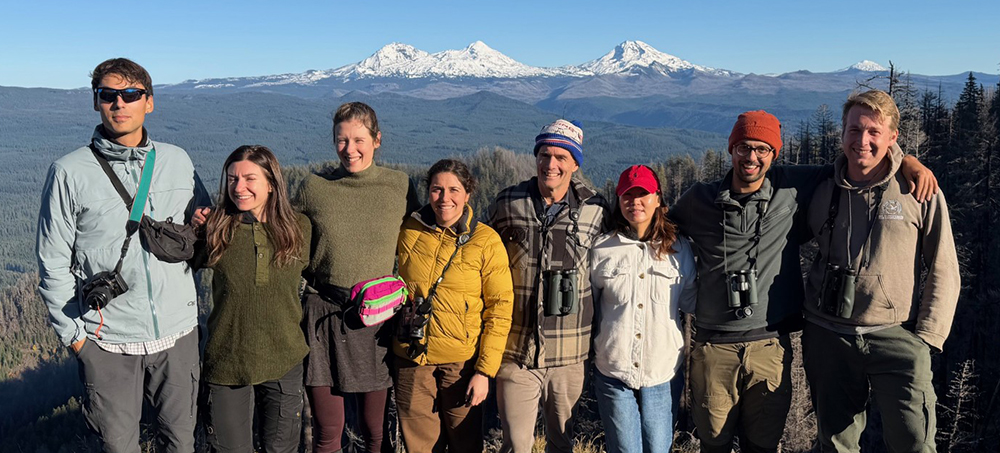

Education background
PhD Zoology (2024), University of Cambridge
MBiolSci Zoology (2019) University of Sheffield
Research Interests
I am a conservation scientist interested in how to meet future wood demands at the least cost to the planet. Much of my research considers how to navigate trade-offs between biodiversity, climate and economic objectives. To do this, I combine detailed field surveys, datasets and ecological theory with landscape-level modelling. I am particularly interested in how conservationists can assess the outcomes of alternative production approaches and I care deeply about how science can be used to influence landscape-scale management practices and reduce species extinction risk. Currently, I am quantifying the biodiversity and climate outcomes of alternative ways of meeting global wood demand, both in Oregon and around the world. I am happiest when walking along ridgelines in old-growth forests.

Education background
PhD Zoology (2024), University of Hawaiʻi at Mānoa
BSc Biology (2016) Ithaca College
Research interests
I am an ecological data scientist with broad-ranging interests that include landscape ecology, dispersal, connectivity, climate change response across scales and taxa, and the interaction of these processes with ecosystem use and management decisions. My current research involves simulation modeling, leveraging long-term datasets from the H.J. Andrews Experimental Forest to better understand how West Cascades forests may respond to future climate, fire, and management scenarios. This project also includes gathering and archiving data from the 2023 Lookout Fire for use in future research. When not in front of a computer, I can often be found hiking, cooking, playing tabletop games, or training dogs.
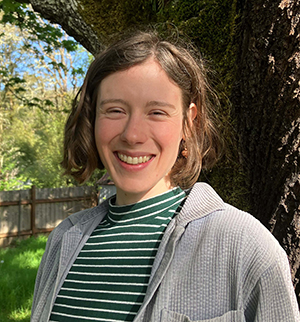
Education background
Ph.D. Ecology, Evolution, Environment, and Society (2023), Dartmouth College
MPhil Plant Sciences (2017), University of Cambridge
B.S. Biology (2016), University of Oregon
Research Interests
I am a forest ecosystem ecologist with a range of interests that includes the aboveground-belowground interactions between plants and soil microbes, landscape ecology, and how these research areas interact and are important for forest community structure and soil processes such as carbon storage. I’m very interested in the socio-political dynamics surrounding the timber industry and strive to ask questions that are relevant for forest management. My current work includes leveraging long-term data to explore how microclimate-buffering traits of old growth-like forests can be applied to silviculture, using applied field research to understand species interactions across variability in understory microclimate and fire severity conditions, and the how the legacy of N-fixing alder shapes the potential for soils to store mineral-protected carbon. When not searching code on stack exchange, I love to spend time outside biking, trail running, skiing, and gardening. I also enjoy enlisting the help of yeasties to make sourdough bread.
Google scholar link: https://scholar.google.com/citations?hl=en&user=BbbTroMAAAAJ

Research Interests
My research centers on computational sustainability, with a focus on applying artificial intelligence and machine learning techniques to address various ecological challenges, such as species interaction analysis and species distribution modeling. I am particularly keen on utilizing remote sensing data to advance global-scale environmental models, especially in areas like aboveground biomass estimation and quantifying forest dynamics. I find great fulfillment in contributing to the mutual advancement of diverse scientific fields.
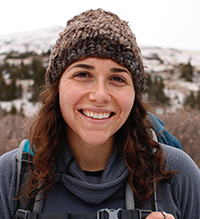
Educational Background
B.S. Wildlife Biology, 2016, University of Vermont
Research interests
My PhD research aims to answer central questions of species coexistence theory, space use, and niche partitioning. I investigate the abiotic (microclimate) and biotic (competition and vegetation structure) drivers of vertical bird distributions in old-growth and second-growth forests. I utilize myriad techniques including tree climbing, bioacoustics, and lidar to evaluate fine-resolution metrics across the vertical dimension in the H.J. Andrews Experimental Forest. I am particularly interested in how birds can mitigate climate driven changes by modifying their habitat use. I am co-advised by Dr. Matt Betts (College of Forestry) and Dr. Erica Fleishman (College of Earth, Oceanic, and Atmospheric Sciences).
Publications
Hintz, L., Fischer, D., Ferrari, N. & Crisafulli, C. M. 2021. Vegetation dynamics under residual large trees following a volcanic eruption in a Valdivian temperate rainforest. Plant Ecology. 222: 915–931.
Educational Background
B.S in Environmental engineering- Universidad Nacional de Asunción, 2018 (Paraguay)
Specialization (course) in Geographic Information Systems and Remote Sensing-Universidad del Pacífico, 2019 (Paraguay)
Research interests
My research experience was focused on the multidisciplinary contribution to the eco-hydrology of wetlands in the Humid Chaco (Paraguay). Specifically, I studied the wetland and riparian forest vegetation diversity and structure to generate information regarding a reference ecosystem for future ecosystem restoration projects in wetlands and riparian forest in the Humid Chaco Ecoregion. In addition, I have been involved in the research team on initial evaluation of medium and large-sized mammals richness, using trap chambers in a silvopastoral system in the American Chaco Research Center (Presidente Hayes Department, Paraguay). My current research interest is to analyze Paraguay's forest changes through time and their effects on biodiversity using remote sensing. I am originally from Paraguay I have this fantastic opportunity thanks to Fulbright, the US Forest Service, and OSU.

Educational Background
BA in Biology (2022), Carnegie Mellon University
Research Interests
My research interests surround the intersection of landscape and community ecology and the impacts of land-use change, landscape heterogeneity, and disturbance on ecological communities. In particular, my master’s work is focusing on quantifying the effects of intensive forest management on early-seral bird communities. I am interested in how landscape composition and configuration, as well as heterospecific interactions, drive the re-assembly of avian communities following forest harvest. I aim for my research to inform conservation and management, adapting for the preservation of biodiversity in a rapidly changing world.

Educational Background
B.S. in Forestry, Forest Resources Management (2021), University of British Columbia
Research Interests
My master’s research focuses on how innovative silviculture systems can promote climate-resilient forests. Specifically, I am examining the relationships between tree retention level, microclimate, biodiversity, and productivity in the forests of British Columbia. I am also studying the effects of burn severity on microclimate distribution in primary and harvested forests at the H.J. Andrews Experimental Forest in Oregon. As a professional forester in British Columbia, I have developed a broad interest in the intersection of forest ecology and management. Particularly, I am interested in using silvicultural practices to balance timber production and ecosystem resiliency in the face of climate change. I am grateful to attend Oregon State University as a recipient of the NSF Graduate Research Fellowship.
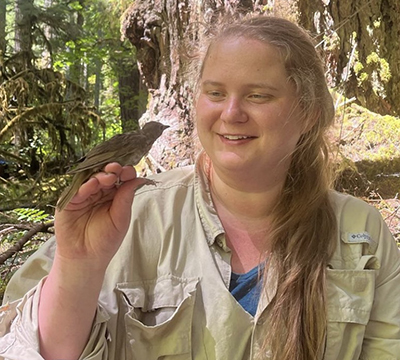
Education Background:
BSc Hobart and William Smith Colleges, 2017
Research interests:
I am an ornithologist broadly focusing on community ecology and how climate can influence songbird health, survival, and distributions. More specifically, I am interested in how species interactions shape distributions. Better understanding how climate mediates species interactions is critical in light of climate change as species will shift towards their preferred climatic conditions. Shifting towards preferred conditions can cause novel species interactions, and my research seeks to better understand the outcomes of those interactions. The majority of my research is conducted at the H.J. Andrews Experimental Forest in Oregon.

Educational Background
M.Sc. 2018, Oregon State University
B.Sc. 2009, University of Minnesota
Research Interests
I am a wildlife ecologist with a broad range of research interests including the population dynamics of individuals and communities, landscape ecology, and how these topics interact at multiple spatial scales. I am interested in exploring these topics through applied quantitative research with potential to inform conservation or management actions. During my doctoral research I will use passive acoustic monitoring data to explore the spatial ecology of marbled murrelets and song bird communities across the Pacific Northwest of the United States.
Publications
Painter, L. E., M. J. Weldy, R. S. Crowhurst, L. N. Carraway, and C. W. Epps. 2022. Landscape genetics of the camas pocket gopher (Thomomys bulbivorus), an endemic mammal of Oregon’s Willamette Valley. Western North American Naturalist 82: XXX.
DOI:
Weldy, M. J., C. W. Epps, D. B. Lesmeister. 2022. Emigration effects on estimates of age- and sex-specific survival of two sciurids. Ecology and Evolution 12: e883. DOI: 10.1002/ece3.8833
Milward L. S., T. M. Wilson, M. J. Weldy, M. M. Rowland, A. Duarte, D. B. Lesmeister, and W. J. Ripple. 2022. Small mammal relative abundance within riparian ecosystems of the Blue Mountains. Forest Ecology and Management 505: 119899. DOI: 10.1016/j.foreco.2021.119899
Epps, C. W., V. M. Petro, T. G. Creech, R. S. Crowhurst, M. J. Weldy, and J. D. Taylor. 2021. Landscape genetics of American beaver in Coastal Oregon. Journal of Wildlife Management 85: 1462–1475.
DOI: 10.1002/jwmg.22102
Epps, C. W., M. J. Weldy, R. S. Crowhurst, and R. S. Spaan. 2021. Estimating the distribution and habitat suitability of aardvarks (Orycteropus afer) in Kruger National Park, South Africa. African Journal of Ecology 59: 854–865. DOI: 10.1111/aje.12916
Weldy, M. J., C. W. Epps, D. B. Lesmeister, T. Manning, and E. D. Forsman. 2020. Spatiotemporal dynamics in vital rates of Humboldt’s Flying Squirrels and Townsend’s Chipmunks in late successional forests. Journal of Mammalogy 101: 187–198. DOI: 10.1093/jmammal/gyz204
Weldy, M. J., T. M. Wilson, D. B. Lesmeister, and C. W. Epps. 2019. Effects of trapping effort and trap placement on estimating abundance of Humboldt’s Flying Squirrels. PeerJ 7: e7783.
DOI: 10.7717/peerj.7783
Weldy, M. J., C. W. Epps, D. B. Lesmeister, T. Manning, M. A. Linnell, and E. D. Forsman. 2019. Abundance and ecological associations of small mammals. Journal of Wildlife Management 83: 902–915.
DOI: 10.1002/jwmg.21641
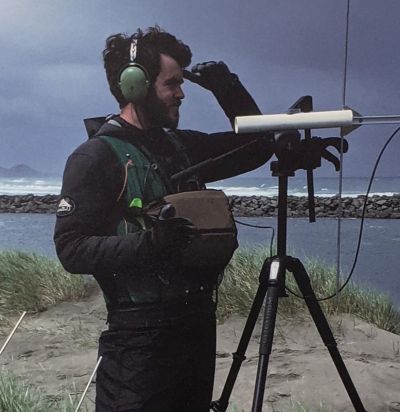
Educational Background
B.A. in Environmental Studies and Sustainable Design, 2011, Pacific University
Research Interests
My research is focused on Marbled Murrelet nest site selection and nest survival. For my masters thesis I will be using aerial and ground based LiDAR to “map” Murrelet nest sites along the central Oregon coast range to ask questions about how murrelets select nest sites and what patterns we can find in the characteristics of sites and how these characteristics contribute to nest survival.

Educational background
Ph.D., 2004, Leeds University
M.S., 1998, Leeds University
B.S. (Honors), 1997, Leeds University
Research interests
My research interests revolve around exploring the implications of anthropogenic disturbance on wildlife. Initially, my research concentrated on the effects of eco-tourism and outdoor recreation across a range of taxa. Using a flexible individual-based model I explored the responses of wildlife individuals and the consequences of disturbance-related behaviour to recreationists across an array of scenarios, such as pathway and trail positions, recreationist activity patterns and habitat lay-out. The outcome of these simulations are used to advise management strategies and site design for the preservation of target species in situ. Case studies included the federally endangered Karner blue butterfly, the state protected black-crowned night-heron, the state protected yellow-headed black bird and the threatened Barbastelle bat in the UK. I then expanded my research focus to investigate the implications of other forms of anthropogenic disturbance. Case studies included exploring the consequences of road networks in proximity to maternity roosts on the foraging activities of the federally endangered Indiana Bat.
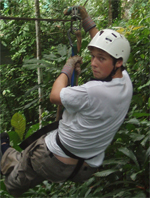
H. B. Sc., 2008, Oregon State University
Research Interests
Interacting Particle Systems Models
Species Distribution Modelling
Landscape Fragmentation
Local stochastic interactions
Sympatric Speciation
I am interested in the patterns and processes of how species distribute themselves. More specifically, I am focusing on Markov chain models as models of landscape fragmentation, sympatric speciation, and the stochasticity of local interactions (or unobservable interactions). As part of the Ecosystem Informatics program, I am interested in learning more about computer visualization techniques, Bayesian statistics, and sampling methods like Gibbs sampling and Markov Chain Monte Carlo methods. Aside from the mumbo-jumbo equations, I am first and foremost interested in ecological questions with mathematical answers: How do birds respond to habitat fragmentation? Which models apply when, and why?
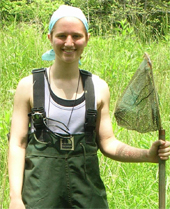
Amphibians are the most threatened of all vertebrate taxa, which is particularly alarming, as they are considered to be bioindicators, or sentinels of environmental health. Despite recent recognition that global population declines are likely caused by multiple interacting stressors, most studies take place in a laboratory setting, examine the effects of one or a few stressors of interest, and focus on egg and larval life stages only. My research, which takes place through the Blaustein laboratory in the Zoology Department, examines the effects of multiple stressors on amphibian populations in an agricultural landscape. I conducted a survey of breeding habitats in the Willamette Valley and associate species presence or absence with habitat characteristics and stressors of interest through occupancy modeling. I also monitored population dynamics at several breeding sites to determine which stressors are related to survival.
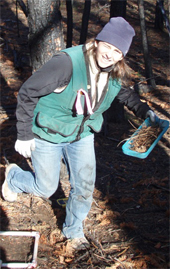
Educational Background
B.S. Geology/Biology 1997, Tufts University
M.S. Forestry 2007, Mississippi State University
Thesis: "Subcanopy response to variable-density thinning in second-growth conifer forests of the Pacific Northwest"
I am interested in forest structural development at multiple scales. My master's thesis research involved examining the response of midcanopy and understory trees to experimental thinnings aimed at accelerating the development of late-successional structure in second-growth conifer stands. Specifically I looked at within-stand differences in growth response to different levels of thinning to see if the treatment was inducing heterogeneity in growth rates of trees in these strata. Going forward, I would like to expand the scope of my research and look at between-stand interactions and the cumulative effect of these relationships on the overall resilience of the landscape to future disturbance. For instance, at the landscape scale does a variety of management strategies (including alternative treatments like variable-density thinning) provide a buffer from or act as a catalyst for further disturbance? When I am not working, I enjoy spending time with my dogs and pretty much anything that gets me outside.
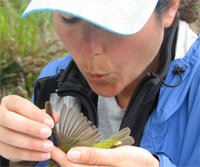
Educational Background
B.S., 2002, Ecology and Evolutionary Biology, University of Arizona
Research Interests
I am broadly interested in avian ecology and research that is meaningful and effective in a management perspective.
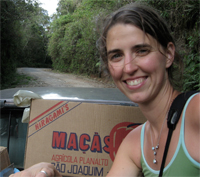
Educational Background
M.Sc., 2008, University of Vermont
B.Sc., 2000, University of Vermont
Research Interests
My research interests encompass understanding how species are distributed across landscapes, avian community dynamics and the influence of habitat loss and alteration on ecological processes (e.g. dispersal and habitat selection). My research involved identifying the major drivers of the patterns we observe in bird distributions and how changes in climate and land use might alter them. I also investigated how inter- and intraspecific interactions shape bird distributional patterns. To examine these questions from novel perspectives I was involved in an interdisciplinary collaboration with math and computer science graduate students as a part of the Ecosystem Informatics program. Some of my previous work involves assessing the importance of scale in habitat selection and occurrence patterns of Bicknell's Thrush in Vermont using occupancy modeling.
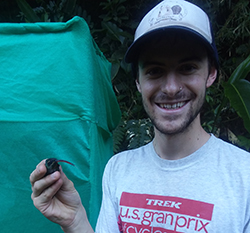
Educational Background
B.Sc., 2015, Colorado State University
Research interests
I am generally interested in evolutionary ecology and biology. My focus is on plant-pollinator interactions, coevolution, and how biotic and abiotic factors may interact to influence plant population genetics and evolution. Currently, I am collaborating with the Betts lab on two projects: 1) The effects of forest encroachment and hummingbird behavior on landscape genetics of western columbine (Aquilegia formosa) in the Central Cascades of Oregon, and 2) pollinator recognition (the capacity to distinguish and choose among different pollinator guilds) in Neotropical Heliconia (Heliconiaceae). We plan to utilize a diverse array of approaches, from manipulative aviary experiments to RNAseq to theoretical models, to better understand evolutionary dynamics in these two systems.
Publications
Gannon, D.G., Kormann, U.G., Hadley, A.S., Betts, M.G., Jones, F.A. 2017. The “jack-in-the-box” stamens of Heliconia wagneriana (Heliconiaceae). Ecology. 99(2): doi: https://doi.org/10.1002/ecy.2042
Gill, B.A., Kondratieff, B.C., Casner, K.L., Encalada, A.C., Flecker, A.S., Gannon, D.G., Ghalambor, C.K., Guayasamin, J.M., Poff, N.L., Simmons, M.P., Thomas, S.A., Zamudio, K.R., Funk, W.C. 2016. Cryptic species diversity reveals biogeographic support for the ‘Mountain Passes are Higher in the Tropics’ hypothesis. Proceedings of the Royal Society B: Biological Sciences 283. No. 1832.
Tortorelli, C.M., Gannon, D.G., Stynoski, J.L., Trama, F.A. 2016. Rhinella yunga Predation. Herpetological Review. 47(3): 442.
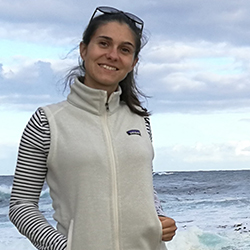
Educational Background
PhD, 2017, FitzPatrick Institute of African Ornithology, University of Cape Town, South Africa
MSc, 2011, Université Aix-Marseille III, France
B.Sc., 2009, Université Aix-Marseille III, France
Research interests
I am a wildlife researcher particularly interested in understanding the ecology of wild populations of endangered bird species to enable sustainable conservation of their populations. For this, I use an interdisciplinary research approach, linking how various environmental factors (e.g., climate conditions, diet and habitat requirements) may affect the breeding parameters and health condition of the species, at both population and individual levels. Part of my research also focuses on movement ecology and migration pattern analyses, as well as on using an eco-toxicological and eco-physiological approach to assess how environmental contamination affects individuals and populations. During my MSc, I studied the endangered population of Egyptian Vultures in the Canarian Islands, I then conducted my PhD research with the endangered Black Harrier population in South Africa. I am now currently working within the Oregon Marbled Murrelet Project (https://www.oregonmurrelet.org/), where I focus on breeding ecology, nesting habitat requirements and individual spatial movements of this species.
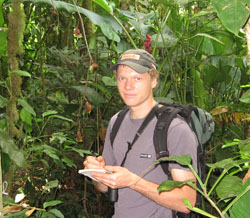
Educational Background
Ph.D., 2012, Oregon State University
M.Sc., 2006, Universite Laval
B.Sc., 2003, University of New Brunswick
Research Interests
I am a landscape ecologist, pollination ecologist, behavioral ecologist, and ornithologist.
I am especially interested in the effects of landscape disturbances on ecological processes. My research efforts focus on the intersection of landscape ecology, pollination ecology and behavioral ecology. My current research is being conducted in two study systems, one located in tropical premontane forest of Southern Costa Rica and the other in a temperate system at the H. J. Andrews Experimental Forest in Oregon. My general interests include: 1) Animal movements and how they are influenced by landscape disturbances; 2) Landscape effects on plant and animal interactions (e.g. pollination, seed dispersal, stability of ecological networks); 3) Landscape genetics; 4) Drivers of species distributions; and 5) The role of social information in resource and habitat selection.
Website
http://adamshadley.com/
Publications
An up-to-date list is available under http://adamshadley.com/publications/

Educational Background
B.S., 2008, The Evergreen State College
Research Interests
My research sought to develop baseline information regarding songbird use of the beautiful and diverse oak habitats of the Rogue Basin in Southwest Oregon, using a large scale point count study in oak savannah, woodland, chaparral, and mixed oak-conifer habitats. Through partnership with the Klamath Bird Observatory, American Bird Conservancy, and others, my work contributed to the ability of public and private entities to manage oak habitats for conservation of overall biodiversity. Recognizing that the majority of intact oak habitat in the Rogue Basin is in private ownership, I explored how the needs of private landowners can be incorporated into effective ecosystem management. I am interested in examining influences of local- and landscape-level habitat context on avian community composition and individual species distribution, and hope my research to heled to predict effects of oak habitat restoration on birds.
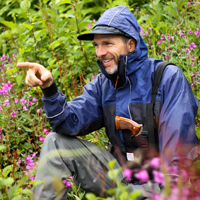
Educational Background
M.Sc. Natural Resources Management, 2004, University of Alaska Fairbanks
B.Sc. Aerospace Engineering, 1990, University of Texas
Research
The focus for my doctoral research was the conservation of biodiversity in managed forests. By working at the interface between resource management and the ecology of forest flora and fauna, my goal was to identify synergies and tradeoffs among timber production, biodiversity, and other ecosystem services. My PhD dissertation addressed three critical questions in this field:
- Do birds help trees grow? More specifically, do the ecosystem services provided by birds (i.e., consuming herbivorous arthropods) benefit tree growth in managed forests? And more generally, how are trophic dynamics affected by increasing management intensity?
- What is the effect of intensive forest management on early-seral biodiversity? Is the early seral stage in tree plantations “truncated”, as often hypothesized? If so, what are the implications for songbirds when intensive forest management is practiced at landscape scales?
- Can working forest landscapes be managed in a way and over long time-scales to balance timber production with biodiversity conservation? How does allocating the proportion of forest to different management regimes (i.e., Triad forestry) effect timber yield and other forest values such as wildlife abundance and carbon storage.
My researcher toolbox includes a strong set of field skills (including leading crews in remote areas of Alaska and Chilean Patagonia), ecological theory to inform hypothesis generation, identification of flora and fauna (especially birds), R-programming, mixed-model regression, occupancy and N-mixture analyses, multivariate analyses, strategic forest planning (e.g., Woodstock), GIS mapping, project and data management, grant proposal development, and outreach. In addition to my academic training, my research is informed by a depth of work experiences in forest and stream restoration (a sample of which is profiled at http://www.seakecology.org/), conservation, and teaching.
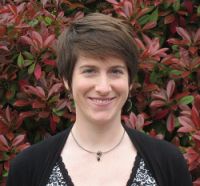
Ph.D., 2009, Carnegie Mellon University
B.S.E., 2002, Bucknell University
My background is in machine learning, and my postdoctoral work focused on the development of computational methods for ecological data analysis. I work primarily with hierarchical latent variable models that represent both ecological and observation processes; for example, occupancy models and their variants fall within this paradigm. My research with the Betts Lab was on robust parameter estimation methods for these models and techniques for incorporating semi-parametric techniques into probabilistic models. My other research interests include species distribution modeling of citizen science data, methods for analyzing species interaction networks, and strategies for evaluating species distribution models.
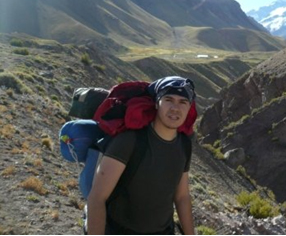
Educational background
Ph.D., 2009 Doctor Europaeus framework (summa cum laude), Universidad Rey Juan Carlos (Spain)
M.S., 2006 Conservation Biology. Universidad Rey Juan Carlos (Spain)
B.S., 2003 Biology (Honors) (5-years degree). Dissertation passed with distinction. Universidad Complutense de Madrid (Spain)
Research interests
I am a researcher and conservation biologist interested in the effects of environmental changes on biodiversity. My major research deals with the the whys and wherefores of biodiversity from a biogeographical perspective. Climatic warming is one of the most worrying environmental problems nowadays. There are diverse studies which indicate that the distributions of a substantial number of species are moving towards colder zones, and that the phenology of many of them is happening earlier. Due to these problems, my research as a PhD student, and part of my postdoctoral work, was focused on sampling effort assessment, biodiversity estimators and predictive modeling. The general objective of my research was being able to identify and predict the ecological processes that determine species distributions and diversity. My research in the landscape ecology group of the Oregon State University tried to address the question of how recent environmental changes have affected broad-scale bird population trends in the US northwest.
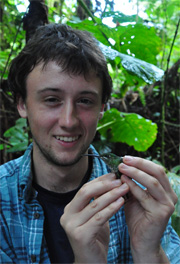
Educational Background
B.S., 2009, Ecology, Evolution, and Behavior Biology, University of New Hampshire
Research Interests
I was a Master’s Student working with Matt Betts (Forest Ecosystems and Society) and Doug Robinson (Fisheries and Wildlife). I am interested in how birds use landscapes (human-modified and natural) and how those landscapes might be managed to promote functional connectivity. I am also curious about foraging strategies of hummingbirds and how competitive interactions and resource abundance might alter them. My research focused on how tropical hummingbirds in southern Costa Rica move through a landscape in which deforestation has led to mostly agricultural use. I also investigated how altering resources might affect hummingbird movement between forest patches. My work was conducted using Radio Frequency Identification (RFID) technology, which allowed me to obtain fine-scale location and temporal data for individual birds.
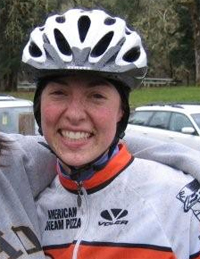
My interests are in predator-prey relationships, trophic cascades, and wildlife population dynamics in habitats influenced by humans and natural disturbances (e.g. wildfire). I am specifically interested in the mechanisms behind wildlife movement and habitat selection (such as predator avoidance and ideal forage/prey availability). I have a background in large mammal research (i.e., big horn sheep, Idaho grey wolves), wildlife habitat restoration and management, and researching affects of wildfire on trophic webs in wilderness stream ecosystems. My interest in wildlife research is not only driven by curiosity about an organism or interaction, but to supply management agencies with accurate information for biologically sound management strategies. My research in the Betts Lab consisted of using telemetry and abundance data to identify movement patterns and habitat usage of juvenile songbirds, specifically winter wrens, during the postfledging period. This research was conducted in managed forest ecosystems in the Oregon Coast Range and is one component of a large scale study researching the affects of timber harvest on terrestrial wildlife and aquatic assemblages.
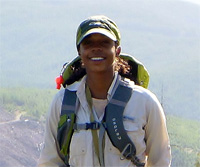
Educational Background
BS (Honors) in Natural Resource Science – Wildlife Ecology, French Language Minor, 2012, Washington State University - Honors Thesis: “Examining trends in taste preference, market demand, and annual catch in an indigenous marine turtle fishery in southwest Madagascar”
School for International Training Study Abroad, Madagascar: Biodiversity and Natural Resource Management, Spring 2011
Research Interests
I am broadly interested in the effects of anthropogenic land use on animal population ecology. I am particularly interested in how land use interacts with topoedaphic factors to modify the microclimates and vegetation upon which organisms depend for critical life processes. My overarching career goal is to use social and ecological research to inform land use practices to create sustainable working landscapes that simultaneously support the use of natural resources by humans and wildlife. My OSU research concerned the effects of intensive forest management on air temperature and reproductive success of cavity-nesting songbirds in the western Oregon Coast Range.
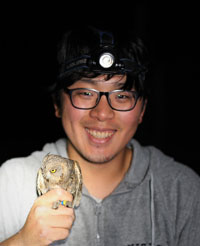
Educational Background
M.Sc. Seoul National University
B.Sc. Seoul National University
Research interests
I am interested in how birds and other vertebrate species respond to the changes in their habitat and relate the consequences of these responses to their conservation. More specifically, I am investigating how large-scale phenomena, such as climate change and anthropogenic habitat change, influence distribution and individual fitness of birds. I will study how thermal refugia (both warm and cold) in old-growth forests influence the distribution and body condition of birds. I am particularly interested in the role food availability plays as a mechanism that can drive survival and distribution of a bird species, and I will investigate the spatial and temporal patterns of microclimate on food availability for birds in forested landscapes. I have experience in research and monitoring of avian diversity and population parameters from a wide variety of ecosystems in the world, such as Chinstrap and Gentoo Penguins at King George Island, South Shetlands; avian diversity in Miombo forests and wetlands of western Tanzania, avian diversity in montane forests of Myanmar, and Long Term nest box monitoring in Korea. This range of experience gives me a solid foundation in avian ecology. I was co-advised by Dr. Brenda McComb and Dr. Matt Betts.
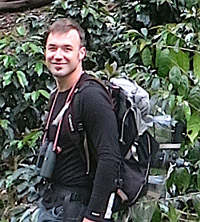
Educational Background
Graduate School Scaling Problems in Statistics, 2014, Center for Statistics, Georg August University of Göttingen, Germany
PhD, Biodiversity and Evolution 2014, Georg August University of Göttingen, Germany
M.Sc. Ecology and Evolution, 2009, University of Bern, Switzerland
B.Sc. Ecology and Evolution, 2007, University of Bern, Switzerland
Research Interests
I am interested in the dynamics of biotic communities and species interactions in the Anthropocene. Broadly speaking, my general interests encompass (i) why organisms are where they are, (ii) how and why species interact (or not), (iii) what ecosystem functions they provide (or not) and (iv) what determines the movement of animals. I am particularly interested in synergistic effects of local and landscape-scale phenomena. During my postdoc, I am working on (i) thresholds in bird communities in relation to intensive forest management (IFM) in North America, (ii) the impact of IFM on pollinator communities and pollination networks and (iii) and collaborate with a NSF-funded project on pollination networks in the tropics. I like to tackle research questions from different angles, that is, by combining experimental, observational, genetic and statistical modelling approaches. Further, I have an active interest in statistics, particularly in hierarchical modelling and statistical techniques to assess betadiversity. An up-to-date list of publications is available under http://urskormann.weebly.com/publications.html
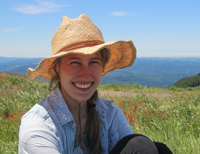
Educational Background
M.A., 2015, University of Texas at Austin
B.S., 2011, Duke University
Research interests
My research focuses on how animals interact with their environments -- particularly changing landscapes -- and the mechanisms through which landscape change influences ecological processes. I am interested in understanding animal movement (what factors influence where, why, and if animals move?), how individual decisions scale up to structure ecological processes (e.g., how do species interaction networks emerge from individual foraging decisions?), and the extent to which behavioral plasticity can buffer against disturbance. My current research is investigating how habitat fragmentation and loss of a keystone plant species affect hummingbird-plant pollination networks in southern Costa Rica.
Publications
Leimberger, K. G., and R. J. Lewis. 2015. Patterns of male dispersal in Verreaux’s sifaka (Propithecus verreauxi) at Kirindy Mitea National Park. American Journal of Primatology. doi: 10.1002/ajp.22455
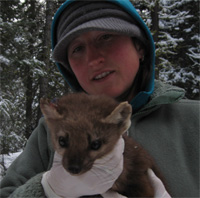
Educational Background
M.Sc., 2009, Oregon State University
B.Sc., 2004, Humboldt State University
Research
My research focuses on forest ecology, animal movements, and how populations are distributed in relation to potential resources. I am interested in the role of social information in resource and habitat selection, particularly regarding an animal’s cognitive ability to find and recollect resource distribution. My PhD evaluated how landscape disturbances influence fine-scale marten movement and activity patterns. We used some of the smallest GPS collars for mammals. We also learned about the distribution of Humboldt marten, a subspecies of Pacific marten along the coast range of Oregon.
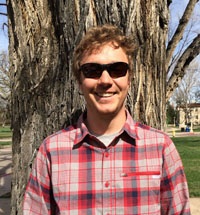
Educational Background
Ph.D., 2015, Colorado State University
M.Sc., 2010, University of Alberta
B.S., 2005, Bates College
Research Interests
My research is focused on the drivers and consequences of animal space use and movement. In particular I am interested in understanding how human-caused landscape change alters these processes and the resulting implications for populations. I also am interested in linking genetic/genomic datasets with animal movement data to better understand ecological and evolutionary processes. My research in the Betts Lab was focused on the spatial ecology of marbled murrelets.
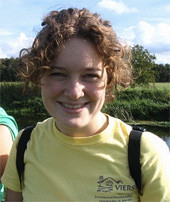
Educational Background
B.A.s (Honors) 2008, Biology and International Relations, Boston University
Research Interests
I was a master's student in the Department of Geosciences. At Oregon State University, I worked with Dr. Matt Betts (Forest Ecology) and Dr. Julia Jones (Geography) to explore the spatial scales of pollination for hummingbird-adapted flowers in mountain meadows. Hummingbird pollination is common in the mountain meadows of the Western United States, however, citizen science has shown a 58% decrease in hummingbirds within the past 40 years (Audubon Society). I am interested in how pollinator dynamics are affected by the spatial distribution of habitat in a dynamic landscape, and how pollinator dynamics affect these plant communities. I studied pollination from a geographic perspective because I believe spatially explicit research is an essential part of ecology. Spatial analysis and geographic visualization are essential tools that will promote the capacity of communities to understand ecological relationships and plan more sustainable interplay with the rest of the ecosystem. I plan to combine the use of molecular tools with observation and manipulation based field ecology studies to investigate the movement of pollen and pollinators. I grew up in southwestern Virginia, and I enjoy playing outside, no matter the activity.
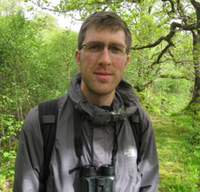
My research is focused on how to reconcile human demands for food, wood and other products with the conservation of birds and other biodiversity. I am interested in understanding the consequences of different production trajectories for biodiversity, and in evaluating potential conservation strategies. I address these questions through fieldwork, data syntheses and spatial analysis. Collaborations include work with the US Forest Service, BirdLife International, the Royal Society for the Protection of Birds, Rainforest Alliance, the International Institute for Sustainability and the UNEP World Conservation Monitoring Centre. I am also interested more widely in ways of identifying and resolving trade-offs between conservation and development; in the ecology, conservation and restoration of tropical forests, especially in Brazil and West Africa; in finding ways to implement land sparing in practice; in the role of sustainability standards in agriculture; and in defining conservation baselines and objectives.
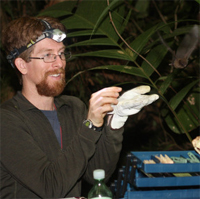
Educational Background
Ph.D., 2013, University of California Santa Cruz
M.A., 2011, University of California Santa Cruz
B.S. (Honors), 2006, Sewanee: University of the South
Research Interests
I am an interdisciplinary researcher interested in the reciprocal relationships between people, animals, and their mutual habitats. My research in southern Costa Rica has focused on tropical forest restoration in degraded cattle pastures, where succession is inhibited by a suite of factors including a lack of seed dispersal. Some of the specific questions that I have been asking in this system include: What kinds of birds and bats are most important for dispersing tree seeds into restoration sites? What are the restoration actions and landscape contexts that maximize visitation by these species and performance of their critical functions? and What are the important human dimensions of regional bat conservation? Broad themes in my research include ecological restoration, community ecology, and conservation biology.
Educational background
Ph.D., 2008, University of California-Santa Barbara
M.S., 1999, Kansas State University
B.S. (Honors), 1997, University of Massachusetts
Research interests
My research addresses questions at the intersection of behavioral ecology, ecological physiology, and conservation biology using birds as a model group. I have long-standing interests in the ecology and evolution of avian brood parasitism and the development of offspring begging displays, and I have combined my interests in these areas to study factors which influence the begging behavior of the Brown-headed Cowbird over ecological and evolutionary timescales. I studied the extent to which physiological traits can be used to predict songbird post-fledging survival and assess how intensive management impacts the health and viability of forest-breeding birds. In addition, I used Tachycineta swallows to investigate a number of questions based in behavior and physiology, including how changes in temperature during rearing influences offspring quality, with applications to understanding how animals are impacted by anthropogenic climate change.
CoF Directory Listing
http://people.forestry.oregonstate.edu/jim-rivers/
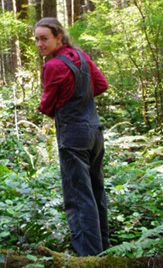
Educational Background
PhD, 2011, Botany, Oregon State University
MS, 2008, Statistics, Oregon State University
MS, 2006, Environmental and Forest Biology, State University of New York College of Environmental Science and Forestry
BS, 2003, Plant Science and Biology, Cornell University
Research Interests
I am interested in how environment and human activities shape species distributions and community dynamics. Addressing these questions has resulted in a diverse background including botany, community ecology, and statistics. Past projects include examining the effects of alternative forest management practices on lichen communities in northeastern and northwestern North America, relating biotic soil crust distributions and communities to climate and soils in arid regions of the Pacific Northwest, and using lichens as bio-indicators of nitrogen deposition and climate. My continuing desire to better understand the natural world has also sparked side-projects on invertebrates, tree regeneration and new statistical methodology. In the Betts lab, I worked toward understanding ecological effects of biofuels and plantation forestry with an emphasis on identifying thresholds in bird responses.
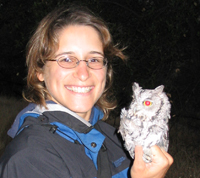
Educational Background
GIS & Remote Sensing Certificate – Humboldt State University, 2007
M.S., Urban bird ecology, McGill University, 2004
B.S., Major in Applied Zoology and minor in Forestry - McGill University, 1998
Research interests
My interests includes landscape ecology, animal movements, population dynamics, and how environmental variables relate to animal abundance, survival, and life history events. My PhD addressed three conservation-relevant questions:
- The goal of my first chapter was to assess large-scale fall migration patterns of Rufous Hummingbirds (Selasphorus rufus), using bird banding data from across western North America.
- In my second chapter, I assessed if the relationship between abundance and habitat was constant across the breeding distribution of 131 species. In other words, do species have stationary SDMs? I used Breeding Bird Surveys across North America and remote sensing data from Google Earth Engine to answer this question.
- In my last chapter, I assessed if North American migratory birds selected the same habitat and thus use the same niche across seasons and years. Here, I used eBird data across the full life cycle of birds (breeding season, fall migration, wintering grounds, and spring migration) to address this question.
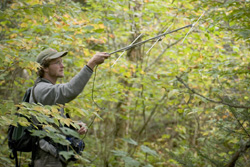
The effects of fragmentation on the survival, fecundity and movement ability of the northern flying squirrel in southern New Brunswick
I studied the movement and survival of the northern flying squirrel (Glaucomys sabrinus) in fragmented landscapes in southern New Brunswick, Canada. The northern flying squirrel is often considered an indicator of older forests due to it's preference for dead trees for shelter, larger trees for gliding, and diet of fungi associated with mature forests. My work focused on how flying squirrels are surviving in landscapes with low amounts of mature cover and how this fragmentation affects their movement ability. Yearly survival rates for flying squirrels were estimated using a 4-year mark recapture study conducted in low mature cover landscapes and high mature cover landscapes.
Educational Background
Ph.D. Forest Ecosystems and Society; Emphasis in Ecology, Oregon State University, College of Forestry – 2018
M.S. Forest Ecosystems and Society; Emphasis in Forest Ecology, Oregon State University, College of Forestry - 2014
B.S. Environmental Science; Emphasis in Land Management, University of Missouri, Columbia, School of Natural Resources – 2010
Research Interests
I am interested in the functional aspects of biodiversity, specifically pertaining to species traits, trophic interactions and responses of species assemblages to disturbance. I am most interested in the effects of land management practices and natural disturbances on wildlife-plant interactions and the role of these interactions in structuring biodiversity. My master’s and doctoral research focused on the interacting effects of wild-ungulates (black-tailed deer and Roosevelt elk) and management intensity on early successional plant communities in young plantations of the Oregon Coast Range. To quantify these interactions, we constructed large wildlife exclosures within experimental forest plantations that were treated with varying intensities of silvicultural herbicides or left untreated. For 6 years, we followed plant species and crop-tree responses to herbicides and herbivory, while documented ungulate foraging via camera traps. My research revealed that the effects of herbivory on plant communities and conifer plantations depended on management intensity, with the strongest effects of herbivory being most evident where more intensive herbicide treatments reduced plant diversity and altered forage composition. I am currently a Post-Doctoral Scholar, working to conclude my efforts on the Intensive Forest Management experiment http://blogs.oregonstate.edu/intensiveforestmanagement/publications/. My overall aim is to contribute to science-based land management and wildlife habitat conservation by applying collaborative ecological research in a large-scale, long-term context.
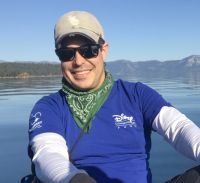
Educational Background
Ph.D. Forest Ecosystems and Society (2017), Oregon State University
M.Sc. Statistics (2017), Oregon State University
M.Sc. Wildlife (2009), Louisiana State University
B.A. Zoology and Environmental Science (2004), Miami University
Research Interests
My research uses advanced, quantitative tools to answer questions at the intersection of fundamental ecology and applied conservation. More specifically, I aim to understand the local- and landscape-scale drivers of population distributions and dynamics for individual species and entire communities. Given the alarming rates of anthropogenic change the planet is experiencing, this information is critical to understand what species are vulnerable to population declines and to identify effective management actions. I am also keenly interested in using the most accurate and precise methods for quantifying species distributions and dynamics. I thus focus on applying modern statistical techniques to novel questions as well as innovating methods to address unique analytical challenges. Although my research spans a gradient from theoretical to applied ecological questions, I am largely interested in research that meets the needs of state and federal management agencies, as well as non-governmental conservation organizations, to ensure my results are timely and applicable to critical conservation challenges. My current work focuses on understanding factors driving distributions and dynamics of the endangered Marbled Murrelet (Brachyramphus marmoratus) with the ultimate goal of mitigating population declines. Jonathon's website
See my publications on Google Scholar.
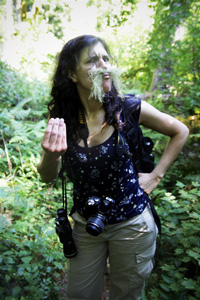
Educational Background
B.S., 2009 Zoology (5-year degree). Universidad Nacional de La Plata (Argentina)
Research Interests
I was a master’s student from the Department of Fisheries and Wildlife, working with Doug Robinson as my advisor and Matt Betts as my co-advisor. I am native from Argentina, but moved to the U.S. thanks to the financial aid of a Fulbright scholarship. I am interested in the effects of landscape fragmentation on animal movement, particularly how structural elements influence the distribution of individuals in space. I am intrigued not only by the ecological implications of movement patterns, but also by the specific behavioral aspects that determine them. The more we understand how animals move in a modified landscape, the more prepared we will be to develop adequate conservation strategies. I am working with hummingbirds in tropical rainforests in Costa Rica, using radio-telemetry to study how they move across the landscape, including both passive movements inside their home range as well as homing movements during translocation experiments. In addition, I studied the relationship between food availability and hummingbird movement patterns.
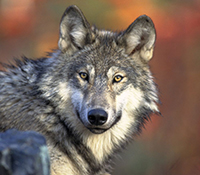
Educational Background
PhD, 2018, Oregon State University
MS, 2013, Oregon State University
BS, 2011, Oregon State University
Research Interests
My research interests include biodiversity conservation, landscape ecology, spatial analysis, macroecology, and large carnivores. I am currently analyzing patterns of deforestation within and around protected areas. The goal of this project is to gain a better understanding of how and why the world’s protected areas vary in the extent to which they limit deforestation. I am also working to model the sensitivity of species to habitat fragmentation using spatial predictor variables. My research typically involves making use of large, often global, datasets. During my PhD, I conducted several analyses related to large carnivore conservation, including assessments of carnivores’ prey species, carnivore species geographic range contractions, and large carnivore rewilding possibilities. I also conducted research in the area of statistical ecology, developing Bayesian models that can be used to estimate species interaction strengths from observational data while incorporating multiple sources of uncertainty.
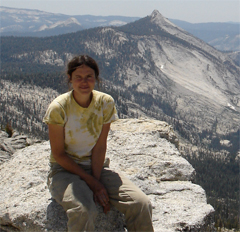
Educational Background
2007 B.S. Neuroscience, University of Michigan
Research Interests
I am broadly interested in landscape ecology, relating patterns to processes, and how ecological processes may vary with spatial scale. I researched whether vegetation characteristics on local and landscape scales can explain occurrence of certain bird species in young Douglas-fir forests and how that relationship may change with time since disturbance.
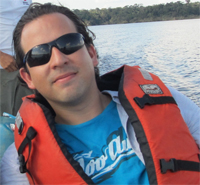
Educational Background
B.S Marine Biology (5-year degree), Universidad de Bogotá Jorge Tadeo Lozano. Colombia.
Specialization course in landscapes and ecosystem management based in simulation models. Facultad de Ingeniería y Arquitectura de La Salle - Universidad Ramon Lull. España.
Research Interests
My experience has been focused in modeling mammal species distributions as a means to conduct conservation planning in tropical ecosystems in South America. I have been part of several biology conservation projects in Colombia, Peru and Ecuador using flagship species to identify priority conservation areas also I have worked on assessment and valuation of environmental services to increase the capacity and management strategies for National Parks. My main research interest was to develop species and ecosystem conservation strategies in my home country. The major threats in Colombia are landscape transformation and fragmentation, so the issues of habitat conservation and connectivity are critically important.
For more information about my background see my Non-Profit Organization webpage at www.procat-conservation.org.
